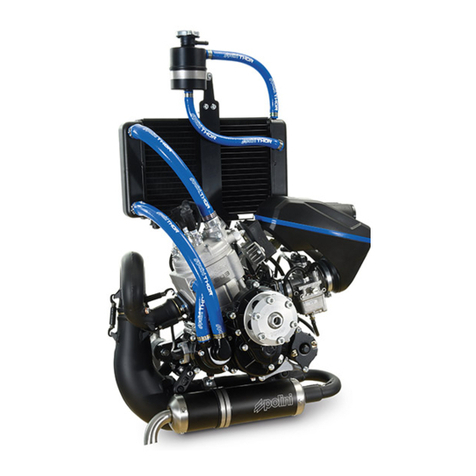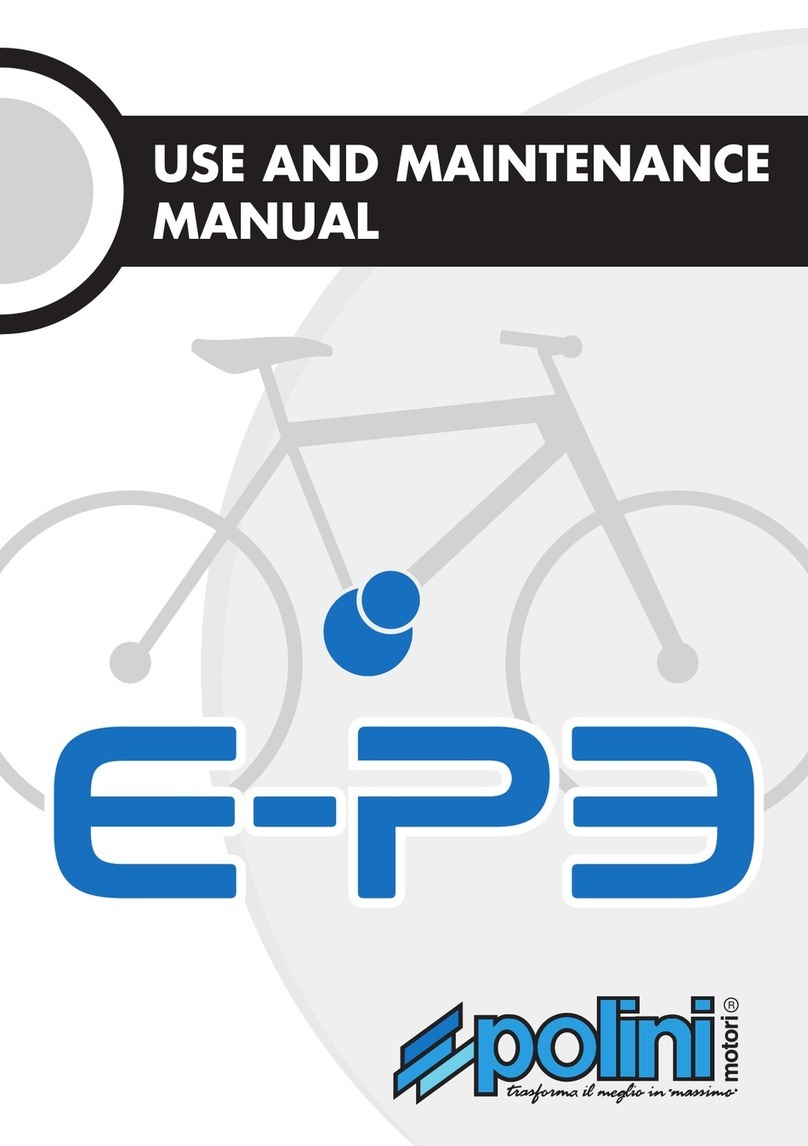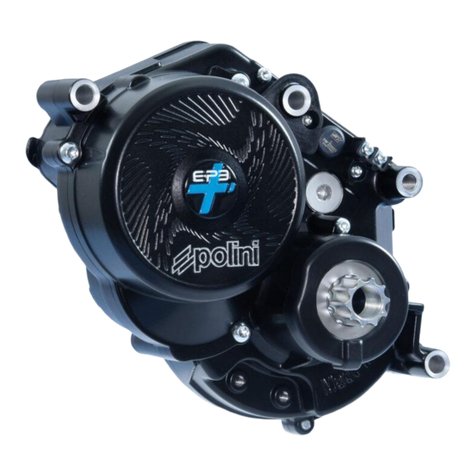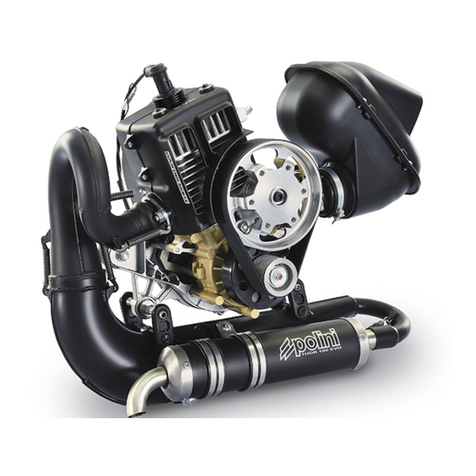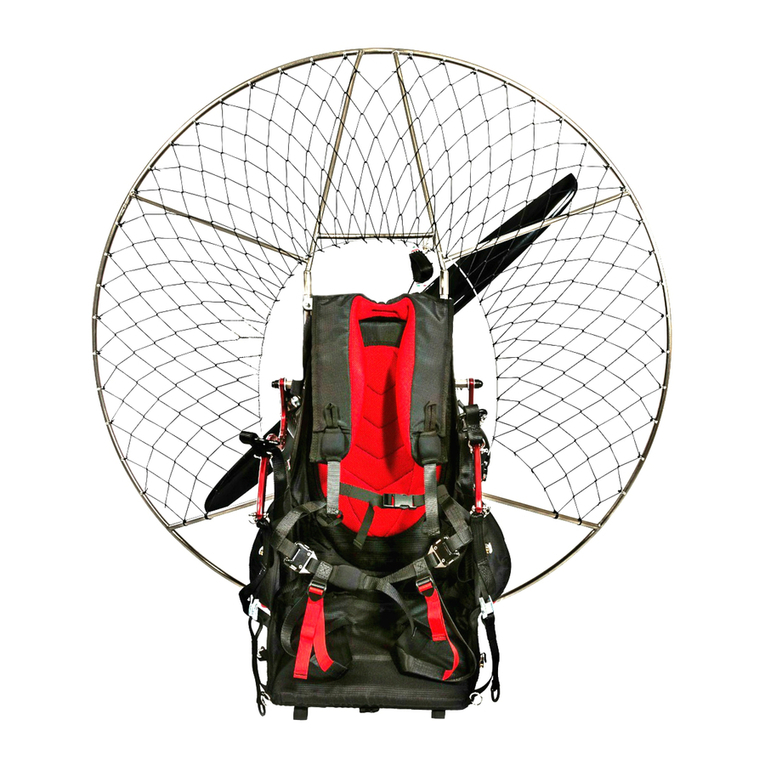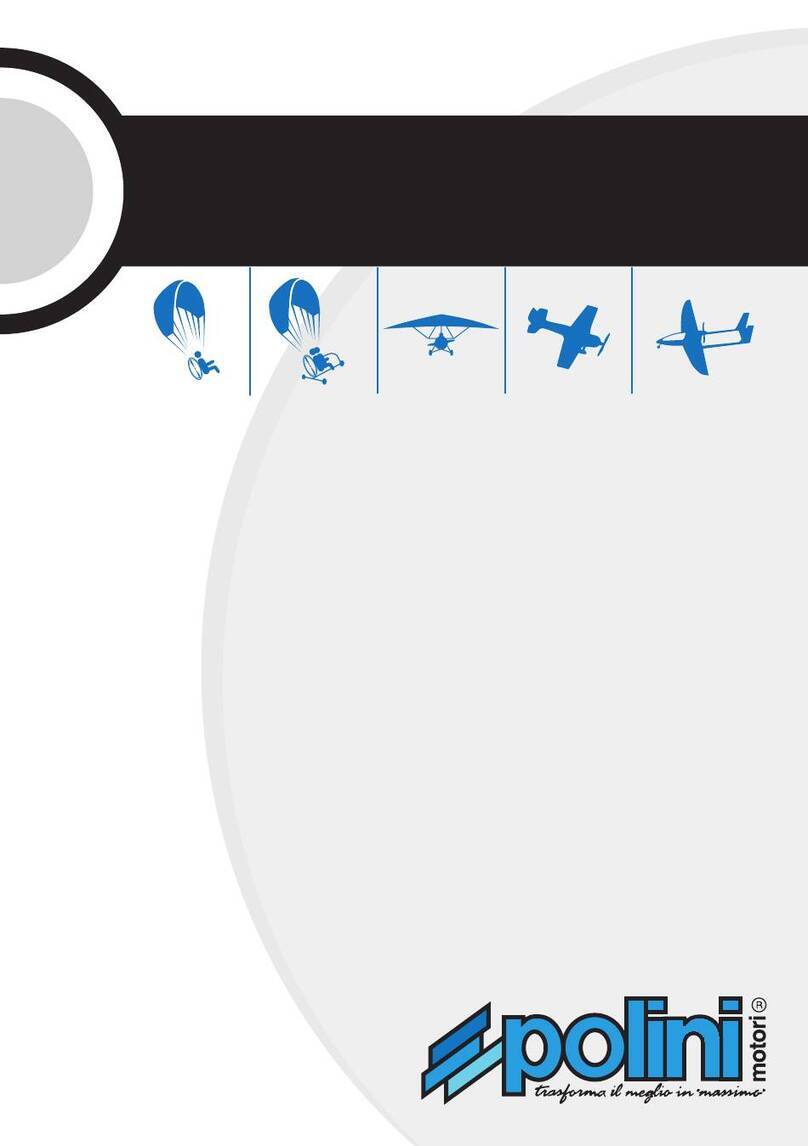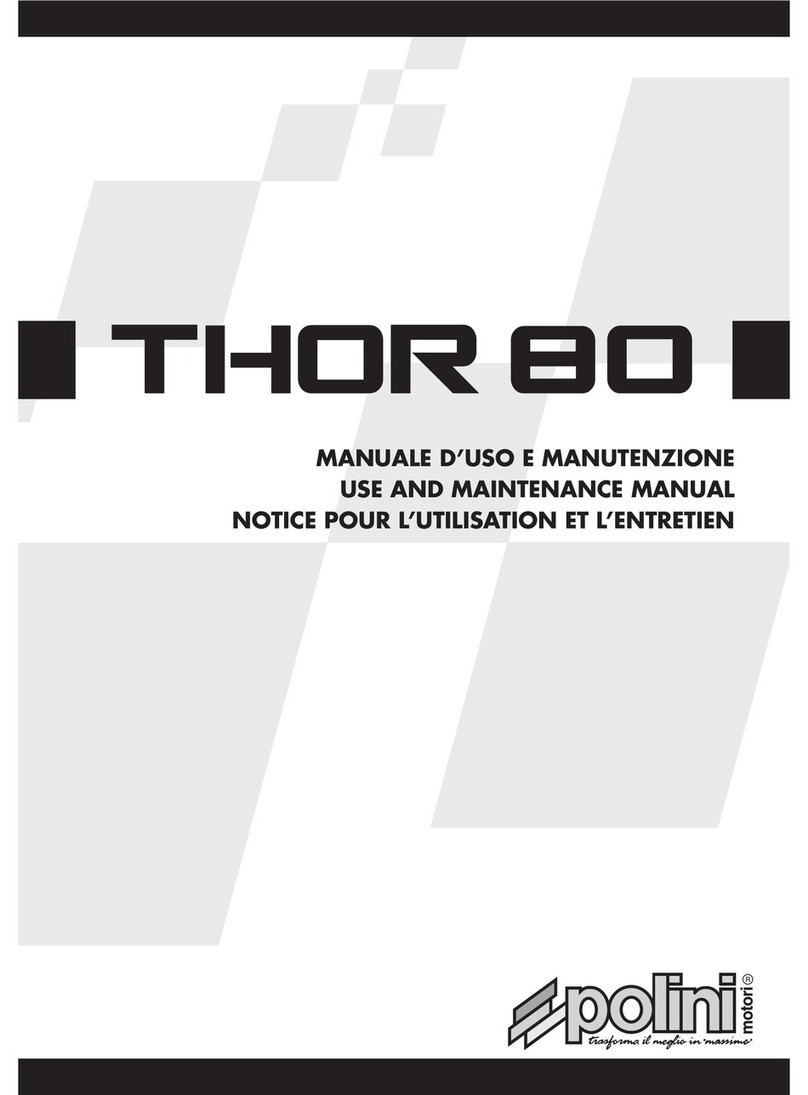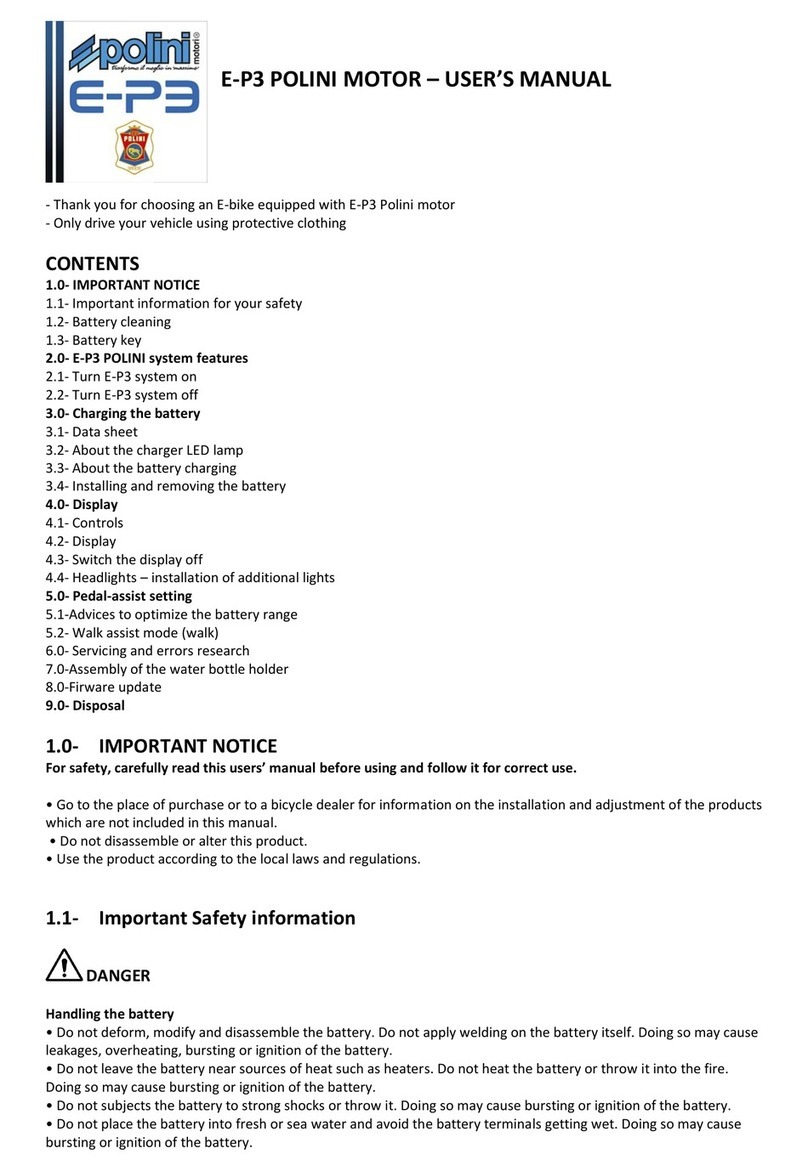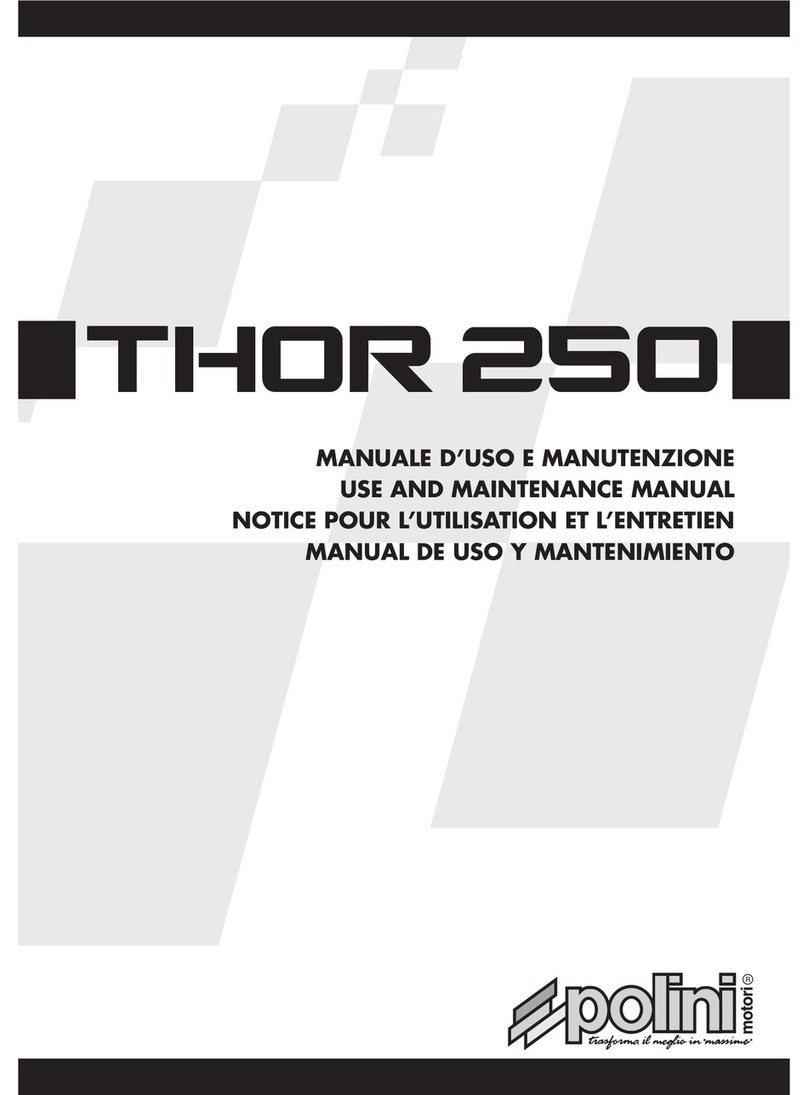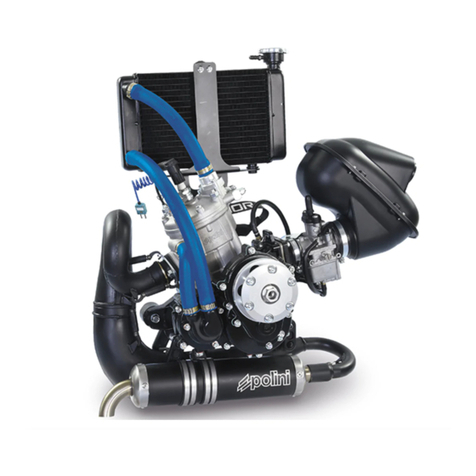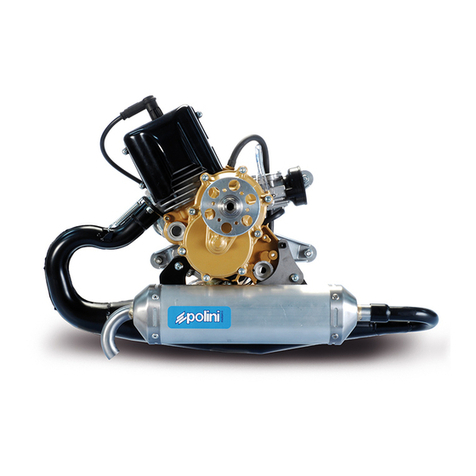
1
ITALIANO
ITALIANO
PREMESSA
Complimenti per aver acquistato un motore Thor Polini. Con questa
scelta siete entrati a far parte di una distinta famiglia di possessori di
un prodotto che vi darà grandi soddisfazioni. THOR è stato progettato
in modo da garantire le migliori prestazioni possibili. Vi raccomandia-
mo di leggere attentamente il presente manuale d’uso e manutenzio-
ne prima di utilizzare il vostro nuovo motore. Questo libretto contiene
informazioni importanti che vi aiuteranno ad ottenere il massimo della
soddisfazione che l’utilizzo del motore Thor può regalarvi. La perfetta
messa a punto e la totale conoscenza del vostro motore assicurano
sicurezza e tranquillità durante il suo utilizzo.
INDICE
1- Avvertenze generali/Garanzia
2- Carburante
3- Messa in moto
4- Rodaggio
5- Spegnimento del motore
6- Controllo carburazione
7- Pulizia
8- Trasporto
9- Manutenzione ordinaria
10- Comportamento da tenere durante le fasi di volo
11- Installazione del motore sul telaio
12- Tabelle manutenzione
13- Diagnosi difetti
1- AVVERTENZE GENERALI
La Polini ed il distributore declinano ogni responsabilità diretta o
indiretta legata all’uso del proprio motore, soprattutto nel caso in cui
il motore venga modificato o manomesso da terzi. La Polini non si
assume la responsabilità di danni causati dalla scarsa manutenzione o
dall’errato montaggio, escludendo la sostituzione dei pezzi dalla ga-
ranzia. Eventuali modifiche tecniche potranno essere apportate dall’ac-
quirente, che si assume tutta la responsabilità di eventuali danni; i
pezzi di ricambio a scopo di modifica non sono coperti dalla garanzia.
Si avverte che ogni modifica al motore apportata dall’acquirente o la
rimozione di parti originali possono rendere il motore pericoloso!
L’utente è invitato a rispettare ed attenersi a quanto indicato e
consigliato nel manuale d’uso e manutenzione per l’incolumità propria
e di terzi. L’utilizzo che viene fatto di questo motore è molto rischioso,
quindi bisogna avere la massima attenzione prima, durante e dopo
il volo, per non incorrere in incidenti molto gravi. A causa dei rischi
insiti nell’uso del motore, e quindi del volo, la Polini non concede
nessuna garanzia contro incidenti, rotture, ferite o morte. Volare
richiede sempre la massima attenzione. Siate consapevoli che volate
a vostro rischio. Prima di ogni utilizzo controllate le buone condizioni
del motore.
Questo motore non è coperto da alcuna assicurazione di responsabilità.
L’uso dello stesso determina automaticamente l’assunzione di tutti
i rischi inerenti lo sport del volo e la personale responsabilità verso
danni propri o a terzi, incidenti, ferite o morte, derivanti dall’uso di
questo prodotto. Si invita pertanto a leggere attentamente le istruzioni
contenute in questo manuale, in quanto utili per una maggiore
conoscenza del prodotto e padronanza dello stesso e dunque utili a
prevenire e misurare eventuali rischi.
GARANZIA
Tutti i motori Polini sono costruiti con materiale di qualità per cui si
garantisce che il prodotto acquistato è privo di difetti, a condizione che
l’acquirente acquisti il prodotto da un concessionario autorizzato Polini.
DURATA
La garanzia ha una durata di 12 mesi decorrenti dalla data di vendita
all’utente finale. È necessario attivare la garanzia con l’apposito mo-
dulo (vedi ultima pagina) e conservare lo scontrino fiscale o la fattura.
COPERTURA
La presente garanzia copre i danni del motore causati da componenti
difettosi per forma o materiale, per progettazione non conforme
all’utilizzo indicato, assemblaggio non corretto da parte della casa co-
struttrice. La Garanzia comprende i soli pezzi di ricambio. Sono esclusi
dalla garanzia i costi di trasporto, che saranno a carico dell’utente.
Sono esclusi dalla garanzia i danni derivanti da:
- modifiche al motore non approvate dalla Polini
- normale logorio o usura dei componenti
- negligenza, mancanza di manutenzione, incidenti, installazione o
manutenzione non corrette;
- cadute accidentali o caduta del motore o dei suoi componenti;
- un utilizzo improprio o dal maltrattamento del motore;
- uso di accessori o componenti non indicati nell’utilizzo del motore
- surriscaldamento o fermo del motore a causa dell’uso prolungato,
oltre il termine consigliato dalla Polini;
- mancata o irregolare manutenzione del motore come indicato dalla
Polini, uso di carburanti o lubrificanti non adatti, presenza di
sporcizia o di corpi estranei nel motore, anche aspirati;
- affaticamento del motore per utilizzo di carichi eccessivi;
- uso di eliche non approvate da Polini
- deterioramento del motore o di parte di esso per custodia in luoghi
non idonei;
- assemblaggio non corretto del motore, compreso l’uso di componenti
non originali Polini e comunque di proprietà di terzi;
- danni al motore derivanti da oggetti esterni;
- interventi di manutenzione da parte di soggetti diversi dalla Polini o
da soggetti non autorizzati dalla Polini;
- utilizzo del motore per competizioni.
- utilizzo del motore senza elica.
- Adempimenti da parte dell’utente finale
Ogni reclamo dovrà essere effettuato consegnando il prodotto da
ispezionare ad un concessionario Polini autorizzato. L’acquirente dovrà
fornire la copia della “prova di acquisto” in originale o del tagliando
di garanzia regolarmente vidimato dalla Polini o dal distributore.
Per conservare la validità della garanzia il cliente deve effettuare le
manutenzioni periodiche previste dal manuale di uso e manutenzione.
- Limitazioni di responsabilità
Conformemente a quanto stipulato nella presente garanzia, gli
obblighi della Polini saranno limitati alla riparazione del componente
